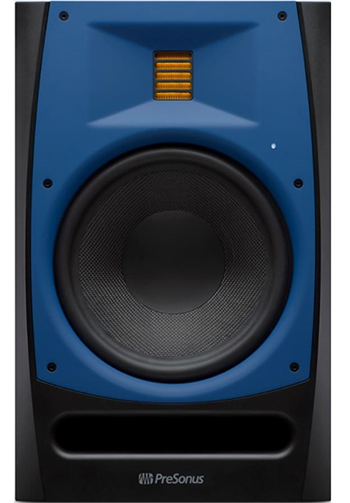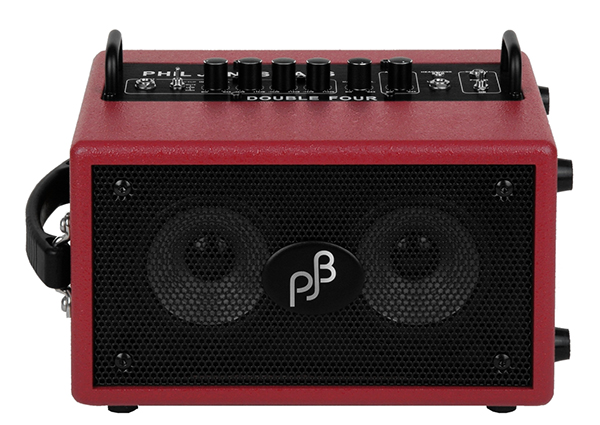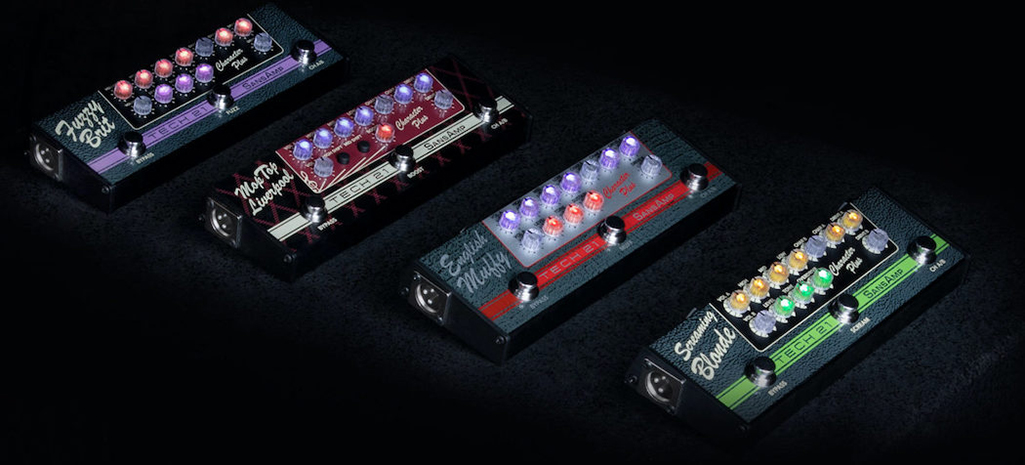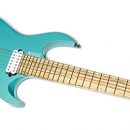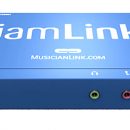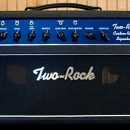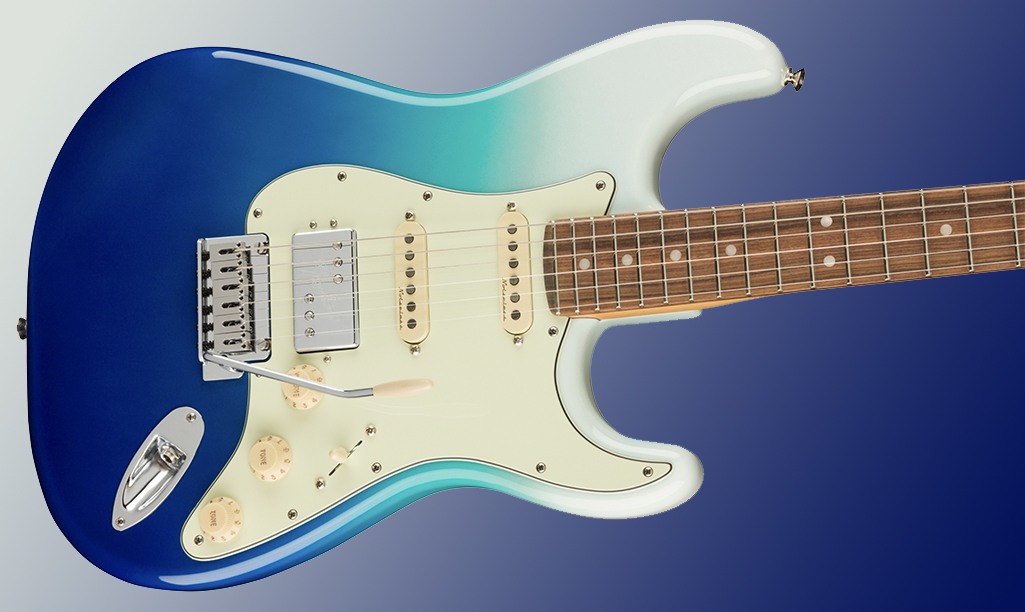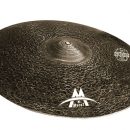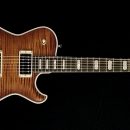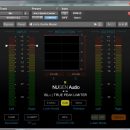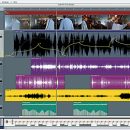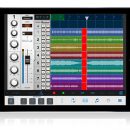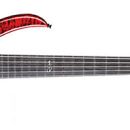| Category | Value | Rating |
| Features | 20% | |
| Usability | 25% | |
| Sound | 25% | |
| Documentation & Support | 10% | |
| Price | 20% | |
|
|
||
| OVERALL RATING = 3.5 Stars
3.6 stars or better: Outstanding, WIHO Award |
||
The Boss ES-8 is a feature rich and (mostly) user-friendly effects switching system suitable for use in a wide variety guitar rigs, and in keeping with BOSS tradition, the company has designed a pretty sophisticated package that remains straightforward enough for most big-rig players to comprehend.If you’re new to audio loopers and switchers, here’s the short story, as explained in Scott Kahn’s book, Modern Guitar Rigs: The Tone Fanatic’s Guide to Integrating Amps & Effects, 2nd Edition:
“Today, we have audio loopers or effects loopers or pedal loopers that enable us to take all of our pedals and place them in their own discrete effects loops, hard bypassable, so when a pedal isn’t in use, it’s not even in the audio path... Additionally, audio loopers enable you to end the famous pedal tap dance. By saving different configurations or snapshots of your pedalboard, a single button stomp can activate any combination of the audio loops, easily letting you go from your compressor and chorus pedals to your overdrive and delay pedals with a single stomp.” And, you can also change channels on your amplifier at the same time.
While players with prior experience using audio looping/switching systems will undoubtedly have a sense of where to begin with the BOSS ES-8, to novices the device may appear somewhat daunting, and it is certainly the most sophisticated product we’ve seen that carries the BOSS badge. But there’s no reason to fear this fantastic product—while the ES-8 may be jam packed with features (including the almost-unique ability to re-route effects pedal order on the fly), it is relatively simple to set up and start using in a number of applications.
Features
![]()
The ES-8 is a programmable effects switching, floor-based system with a total of eight effects loops plus one volume loop. The unit is controlled by a total of twenty switches and buttons: eight loop switches, two bank selection switches, a mute switch, a switch to toggle between Memory and Manual modes, and eight buttons used to control various parameters and patch settings.
The ES-8 features two distinct modes that change the way the unit operates. Memory mode recalls patches that are saved in the unit, while Manual mode routes each footswitch to the corresponding numbered loop to turn individual effects On/Off, stomp-box style.
In Memory mode, the ES-8 offers one hundred banks of eight patches each, and the LED indicators over the switches change color based on which mode the unit is operating in. Each switch on the ES-8 is also freely assignable to a variety of control functions, making the unit highly customizable for a number of unique setups.
The first six loops within the ES-8 are monophonic, while loop 7 is Mono In and Stereo Out, and loop 8 offers full stereo In and Out. The unit features two input jacks so multiple guitars can be used with the unit (input selection is a programmable setting that can be attributed to each patch), useful if you want to use certain effects with an acoustic/electric guitar for example, in addition to your primary electric guitar.
There are a send and return for a volume pedal, as well as a dedicated output for an external tuner. There are also two outputs for running a stereo rig or switching between a pair of amplifiers.
The rear panel also features three (stereo) TRS, external control jacks for amp channel switching/reverb controls/etc. This is fantastic, as most switchers only provide two jacks, which is rather limiting for players with more complex, multi-channel amps. There are two expression pedal jacks and two control input jacks are provided for controlling effects units. MIDI In and Out/Thru jacks enable control over your advanced effects units. There is a DC input on the rear for an included Boss PSA power adaptor, but the ES-8 does not supply power to your effects pedals.
The front panel of the unit is fairly straightforward featuring all switches and buttons, as well as LCD and LED screens displaying the relevant information to the current bank and patch.
When a loop is not activated, the signal bypasses the loop entirely; maintaining the integrity of your guitar’s tone. The ES-8 also features dynamic routing so the sequence of loops in each patch can be changed for each patch, and two onboard mixers allow for pedals to be used in parallel instead of in series (feeding into one another).
Another cool feature of the ES-8 is that BPM times for your delay effects can be stored on a per-patch basis. Further, you can reassign any footswitch to function like a Tap Tempo (over MIDI) pedal. And, you can attach external pedals like a BOSS FS-5U, FS-6, or FS-7 to one of the CTL In jacks to provide external tap tempo control instead of dedicating one of the onboard footswitches.
The ES-8 is a sizable piece of equipment that will take up a substantial amount of space on your pedalboard. The dimensions of the unit are (w) 17.3” x (d) 5.4” x (h) 2.6” and it weighs about 5.5 lbs.
Usability
![]()
The first step in testing the ES-8 was to arrange our new pedalboard configuration. The first rig we set up using the ES-8 was a fairly simple combination of five pedals, a tuner, and channel switching functions. In this situation we had all of our pedals running in front of the amp. The ES-8’s simple rear layout made it easy to get our pedals and other cables patched in relatively quickly, and after familiarizing ourselves with the unit and a few user errors, we were able to get this basic rig up and running.
The amplifier being used was a Mesa Boogie Mark V:25 two-channel amplifier with a dedicated EQ section that utilizes a two button footswitch, and a single 1/4” TRS cable into the ES-8’s first external control jack was more than enough to handle all the channel switching functionality of the amplifier.
The pedals being used in this particular situation were mostly time based effects; an MXR Phase 90 phaser, a Boss DM-2 delay, an Electro-Harmonix Holy Grail Nano reverb, an Electro-Harmonix Stereo Electric Mistress flanger, and a Dunlop Crybaby Wah. We also had a T.C Electronics Polytune 2 Noir connected to the ES-8’s tuner output.
One of the most important things to be noted with any effects switching system like this is the importance of custom cable lengths. In this particular test situation, we were forced to use a variety of assorted cables which resulted in an unsightly and unruly mess. When it comes time to finalize your setup with the ES-8, a fair amount of pre-planning should be done before you start Velcroing anything down.
We found the ES-8 to be exceptionally easy to use in manual mode, with each switch on the front routing to the corresponding pedal loop. While this mode did not offer any of the true benefits of the unit, it did add a sense of uniformity to the pedal landscape and made all the sonic options on our pedalboard much more accessible than they would normally be without having to step over pedals to reach the second or third row of our pedalboard.
In Memory mode where the most useful aspects of the unit lay, we found writing a patch to be very simple. After choosing which bank we wanted to build in and pressing which patch we wanted to edit, the Edit button on the face of the unit selected what parameter was to be edited (in this case the Loop On/Off status), and then pedals could be chosen to add or remove from the current patch. After this, the patch could be named and written it into the ES-8’s memory bank. For our first patch in bank one we created a lush clean sound using the delay, reverb, and chorus pedals attached to loops 3, 4, and 5.
Control functions and amp channel switching were also relatively easy to setup once we familiarized ourselves with where all of the settings/controls were. Once again we used the Edit button, chose to edit the patch settings, and after a bit of scrolling, all 1-6 external control jacks were shown onscreen. In this case CTL1 controlled the amp channel and CTL 2 controlled the status of the amp’s EQ section. These were extremely easy to change from patch to patch and we had no problem mapping our amp’s clean channel to the first few patches and our distorted channel to the next few with various EQ On/Off settings.
One very useful feature of the ES-8 that we discovered while testing was the ability to temporarily edit our patches while playing. If you’re using a specific patch frequently and want to make some temporary changes on the fly, or if inspiration hits during a gig and you just need to add that flanger to your main distortion, you can choose the basic patch and then switch the ES-8 into Manual mode. It retains everything from the patch but allows you to add in other loops manually. Once you switch back to Memory mode anything you added this way will be reset, but it means that you aren’t strictly limited to what you’ve set your patches to in the past.
We experienced a short sound cutout when switching back to Memory mode after additional loops had been activated though; this cutout didn’t exist when simply switching between Memory and Manual modes. [Editor's Note: Since bringing this issue to their attention, the engineers at BOSS are working on a fix, so periodically check the BOSS website for product firmware updates.]
When switching banks on the ES-8, all the front lights will blink, and the current patch does not change until you hit another switch to select a new preset within the bank, which is how we expected the unit to behave.
One of the nice things about the ES-8’s dedicated tuner output is that your tuner is on all the time. If you’d like to tune silently, simply hit the mute button on the face of the ES-8 and tune away.
In terms of our Wah pedal, we placed it in two different loop locations during our testing. First we placed it in the first loop of the ES-8 and included it in each patch we thought we would be using it in, leaving it Off by default. The other option was to run the Wah in-line between the guitar and the ES-8 (not using any of the loops). We found there to be no real noticeable difference, and players with more than eight pedals may prefer to go this route.
Our next rig configuration was more involved, and we got to experience the complex side of the ES-8: this configuration will not be intuitive to players who lack prior experience with effects loops and audio looper products, but with some patience, once you learn the basics a few times, it becomes easier.
We had a Mesa Mark IV amp and a pedalboard whose effects needed to be split between the front-of-amp and in the effects loop. First, it should be noted that certain multi-channel amps like the Mark IV/V and other modern, multi-channel amps (Road King, Dual Recto) have more switchable features than can be accommodated by three TRS switching jacks. We added an RJM Mini Amp Gizmo to our pedalboard, which provides a MIDI-controlled interface to switch the myriad number of controls on advanced guitar amps, and with the MIDI output from the ES-8, it was easy to control our amp channel switching, loop and reverb on/off, and more.
Splitting the signals from the ES-8 between front-of-amp (for our classic effects like flanger/phaser and wah) and effects loop (time-based effects like delays and reverbs) was a bit confusing. After scrolling through a couple of screens until we could see the loops, what was totally unknown to us at first glance was that the display scrolled left to right… and just a single space away, past the first screen and to the right, was the V symbol (for the Volume insert loop connection point) that we needed to move into a new position on the display to indicate where our break point was. If not for a helpful tip provided by the folks at BOSS, we don’t know how long it would have taken to make this particular discovery.
We had to save the loop break point (front of amp/effects loop) individually on each of our programed patches, but would have liked a global setting where we could preset the break point to a default location. For 99% of our sounds, the loops stay put right where we want it. So, you do have great flexibility on a per-patch basis, but for most players, it’s actually more than you need.
One of the coolest capabilities of the ES-8 was easy to take advantage of—changing the order of the effects loops. For players who love to experiment with the order of their pedals, the ES-8 is almost entirely in a league of its own with this feature (until you jump up to boutique rack gear like the Sound Sculpture Switchblade products), and with the same ease of moving the insert loop point, we could re-arrange the order of our pedal loops.
More challenging was splitting a few loops from the default series loop routing to parallel, which we wanted for our delays and reverbs. The small screen on the ES-8, coupled with the product’s enormous flexibility and multitude of menu screens, made it somewhat easy to get lost at times. A computer-based editor would make setting up complex signal routing far easier than navigating the ES-8, though to be fair, it’s still far easier to configure than older programmable gear, and once you get the hang of it, it’s relatively painless. We hope that Roland will either release an editor of their own or facilitate a third party developing one (like Vyzor, for example).
Sound
![]()
With our smaller setup we found the ES-8 to be extremely transparent, with next to no alteration or degradation of our rig’s natural tone. If anything, we noticed more clarity in our signal and effects due to the isolation of each individual loop.
Our more complex configuration required some finesse regarding signal levels between pedals (the ES-8 enables you to adjust levels to volume match your loops), and overall, we remained impressed with the audio quality of the results. There’s not much value in an audio looping product if it takes anything away from your tone. But keep in mind that the ES-8 (with its digital switching matrix) buffers the signals from your pedals. If you’re a true-bypass kind of player, you’ll probably want to stick with simpler looping products (though you will lose the ability to change loop order if you do).
Documentation and Product Support
![]()
Included with the ES-8 is an in-depth manual that explains the functionality of the unit very well and also includes comprehensive diagrams of advanced applications and set-ups for the unit. The BOSS website also features a “Deep Dive” page with detailed written explanations of the unit’s more advanced capabilities.
Price
![]()
The Boss ES-8 (MSRP $975) retails for approximately $699. Compared to other similar products on the market, the ES-8 is relatively affordable and offers much of the same functionality that more expensive boutique units offer, plus some functionality that is superior to the competition (like assignable loop order).
If you don’t need as many audio loops, consider the more compact and less expensive BOSS ES-5, which offers the same quality but a slightly reduced feature set.
Contact Information
Boss
www.bossus.com



